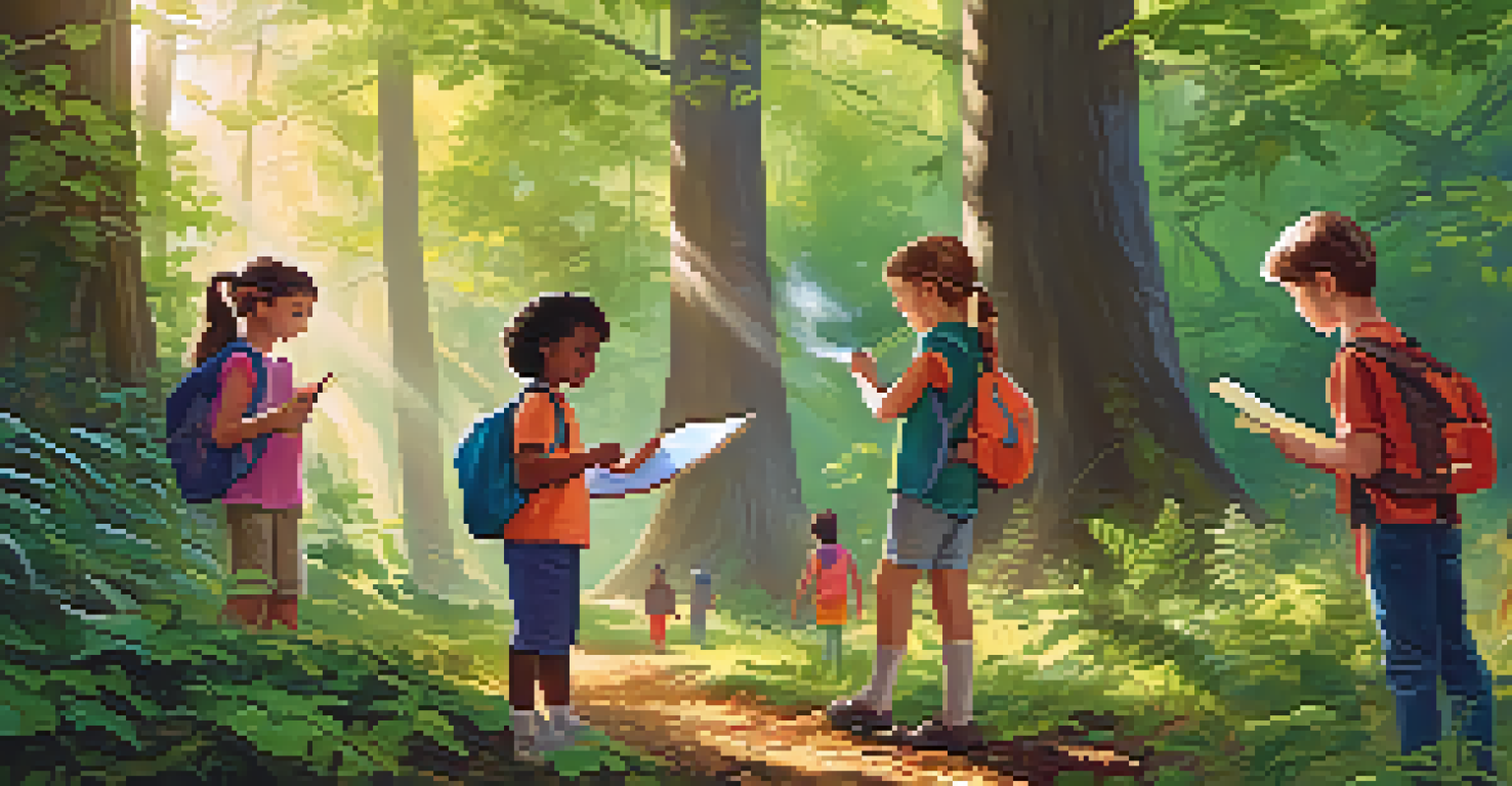Play and Mindfulness: Teaching Kids to Be Present

Understanding Mindfulness and Its Benefits for Kids
Mindfulness is the practice of being fully present and engaged in the moment. For kids, this can mean noticing the sensations of their environment, their thoughts, and feelings without judgment. By fostering mindfulness, children can develop better emotional regulation and focus, which are crucial for their overall development.
Mindfulness is not about getting anywhere else. It’s about being where you are.
When children practice mindfulness, they learn to slow down and appreciate the little things, like the sound of leaves rustling or the taste of their favorite snack. This heightened awareness can lead to reduced anxiety and improved social skills, as they become more attuned to their surroundings and the emotions of others. It's like giving them a superpower for navigating life!
Incorporating mindfulness into playtime not only makes it enjoyable but also sets the groundwork for a healthier mindset. By helping children recognize their emotions and thoughts, we empower them to respond to challenges with resilience and clarity.
The Role of Play in Developing Mindfulness Skills
Play is the natural language of children, and it offers a perfect platform for teaching mindfulness. Through activities like imaginative play or simple games, kids can practice being present and engaged. For example, a game of freeze tag encourages them to stop and pay attention to their bodies and surroundings.

Mindful play can also involve activities that require concentration, such as building with blocks or coloring. These tasks encourage kids to focus on the process rather than the outcome, fostering a sense of calm and acceptance. It's all about teaching them to enjoy the journey, rather than just striving for a goal.
Mindfulness Enhances Emotional Skills
Practicing mindfulness helps children improve their emotional regulation and focus, leading to better social interactions.
By integrating mindfulness into play, children learn to navigate their thoughts and feelings in a fun and engaging way. Over time, these skills can translate into better focus and emotional regulation, benefiting them in school and social situations.
Simple Mindful Play Activities for Kids
There are countless ways to incorporate mindfulness into play. One simple activity is mindful breathing, where children take deep breaths while focusing on their breath's rhythm. This can be done before or during playtime to help them center themselves.
The best way to capture moments is to pay attention. This is how we cultivate mindfulness.
Another fun option is nature scavenger hunts, where kids seek out specific items in their environment. This activity encourages them to observe their surroundings closely, promoting a sense of wonder and appreciation for nature. It's like turning a simple walk into an adventure for the senses!
Lastly, consider introducing yoga or movement games that emphasize being present in the body. These activities not only help kids develop physical skills but also enhance their ability to connect with their inner selves, making mindfulness a natural part of their play.
Creating a Mindfulness-Friendly Environment
To effectively teach mindfulness through play, creating a supportive environment is key. This can involve setting aside specific times for mindful play, free from distractions like screens and noise. When children know they have a designated space for this practice, they can engage more fully.
Incorporating calming elements, such as soft lighting or soothing music, can also enhance the mindfulness experience. These elements help create a peaceful atmosphere that encourages kids to relax and be present. Think of it as setting the stage for a magical moment of connection with themselves and the world around them.
Play is Key for Mindfulness Learning
Incorporating mindfulness into play activities allows kids to engage fully while developing important skills in a fun way.
Finally, be patient and encourage a sense of exploration in children. Mindfulness is a skill that takes time to develop, and by fostering an open and nurturing environment, you’ll help them grow into more present and aware individuals.
Mindfulness Games That Foster Presence and Awareness
Games specifically designed to cultivate mindfulness can be a fantastic addition to playtime. For example, the 'Five Senses' game encourages children to identify things they can see, hear, smell, taste, and touch in their environment. This simple activity helps ground them in the present moment.
Another engaging option is 'Mindful Listening,' where kids sit quietly for a few minutes and focus solely on the sounds around them. They can then share what they heard, helping them enhance their listening skills and awareness of their surroundings. This game not only promotes mindfulness but also fosters communication skills.
These types of games make mindfulness fun and relatable, allowing children to practice being present while enjoying their time. The more they engage with these activities, the more naturally mindfulness will become part of their daily lives.
Encouraging Mindfulness Beyond Playtime
While play is an excellent way to teach mindfulness, it's important to extend these lessons beyond playtime. Encourage children to practice mindfulness during everyday activities, such as eating or walking. For example, during meals, prompt them to savor each bite and notice the flavors and textures.
Incorporating mindfulness into daily routines helps reinforce the idea that being present can be part of any moment. This could be as simple as taking a few deep breaths before starting homework or focusing on the sensations of water while washing their hands.
Long-Lasting Benefits of Mindfulness
Teaching mindfulness through play equips children with valuable tools for emotional health, empathy, and resilience that last into adulthood.
By integrating mindfulness into various aspects of their lives, children will learn to carry these skills with them, leading to a more mindful approach to life in general. It's about making mindfulness a habit rather than a separate activity.
The Long-Term Impact of Mindfulness on Children
Teaching kids mindfulness through play can have lasting benefits that extend well into adulthood. Research suggests that children who practice mindfulness tend to have better emotional regulation, improved focus, and lower levels of stress. These skills can positively impact their academic performance and personal relationships.
Moreover, kids who learn mindfulness are often more empathetic and compassionate. As they become more aware of their feelings, they're better equipped to understand the emotions of others. This can lead to stronger friendships and healthier social interactions.

Ultimately, by instilling mindfulness in children through play, we're equipping them with tools that enhance their quality of life. It's an investment in their future well-being, creating a generation of more present, compassionate, and resilient individuals.